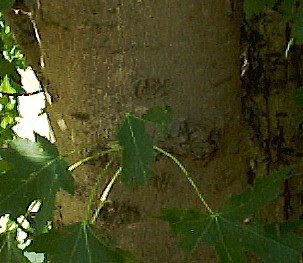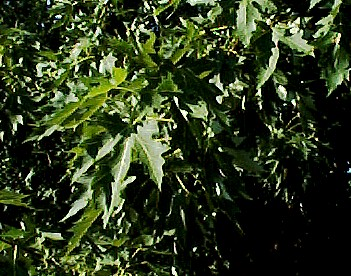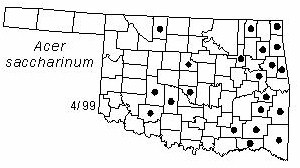

Tree to 20 m (65 ft) tall and 60 cm (2 ft) diameter, usually with a short thick trunk. Bark gray and thin, becoming furrowed into long shaggy scaly ridges on older trunks and branches. Twigs long, light green to brown, glabrous, with small reddish blunt buds. Leaves opposite, long-petioled, blades 7.5-13 cm (3-5 in) long and usually about as wide, deeply 5-lobed with 5 main veins from base, doubly serrate, dull green and glabrous above, silvery white below, turning yellow in fall. Flowers crowded in clusters along twigs in late winter or early spring, usually greenish or yellow from reddish buds, about 6 mm (0.25 in) long. Fruits light brown paired samaras 4-6 cm (1.6-2.4 in) long maturing in late spring.
Distribution: The species is native to much of the eastern United States.
Habitat: wet floodplain forests.
Comment: Silver maple is often planted as a shade tree because it has a rapid rate of growth, but the wood is weak and the trees are vulnerable to severe damage by wind and ice. The seeds are eaten by squirrels and birds. Acer is the old Latin name for maples; saccharinum refers to the sweet sap.
NWI status: FAC
Distribution in Oklahoma: 
Occurs naturally in about the eastern 1/4 of the state, but has escaped from cultivation and can be found along streams over much of Oklahoma.
BACK
NEXT
RETURN TO INDEX
Last update: 9/7/99
 Go to Oklahoma Biological Survey Home Page
Go to Oklahoma Biological Survey Home Page
 Disclaimer
Disclaimer